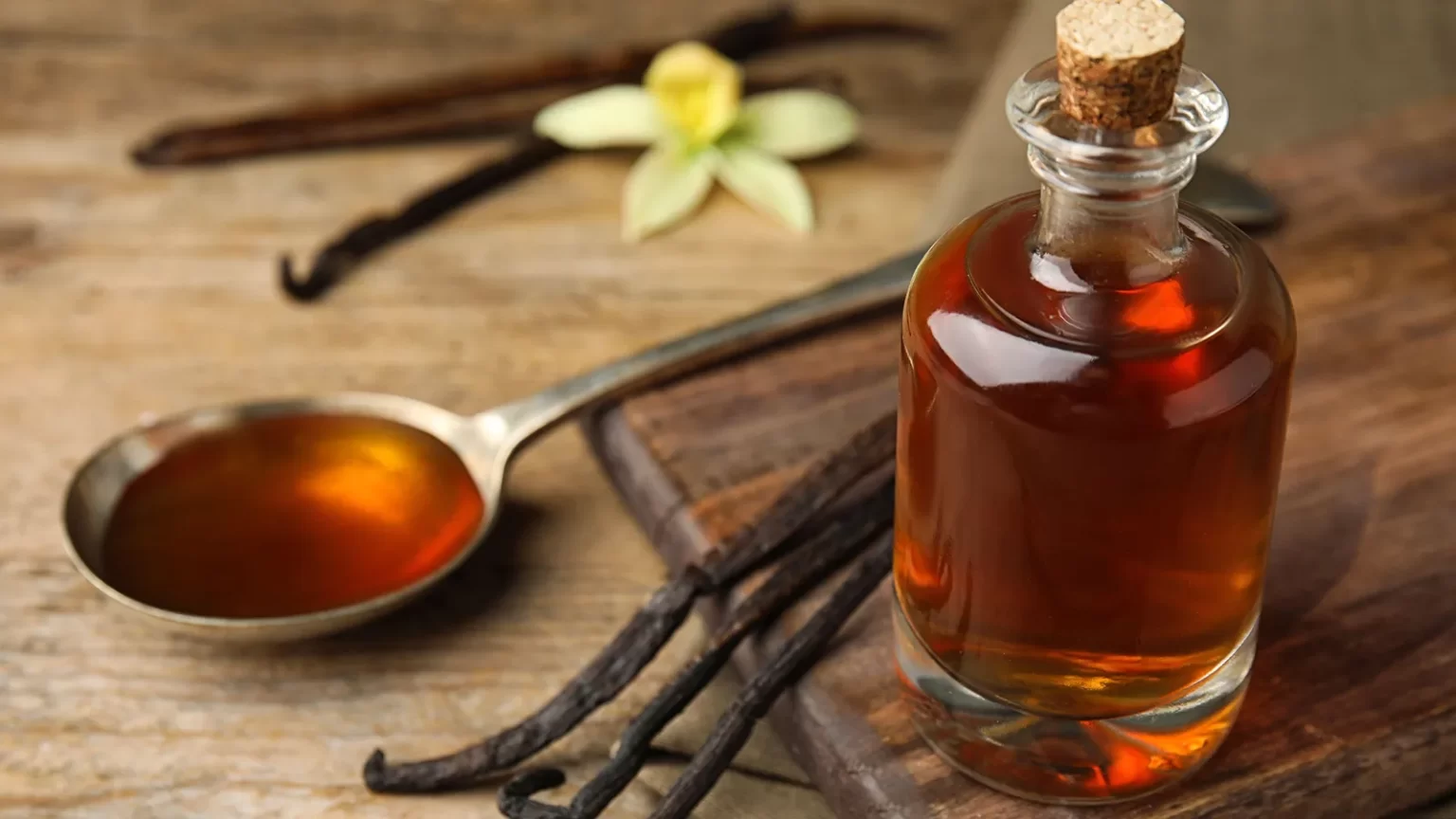The story of vanilla, as with most truly international crops, criss-crosses a world atlas. But vanilla did not originate in Madagascar, despite the country's current global dominance of its trade. Instead, it started in the jungles of Mexico and Central America, where a long, windy vine evolved to develop that distinctive, penetrating aroma that we all know so well.
What is perhaps most compelling about vanilla is the fact that its multi-billion dollar industry exists because of a 12-year-old enslaved boy who lived 180 years ago on a remote Indian Ocean Island. But the orchid, whose pod-shaped fruits contain the sweet vanilla essence, would take a wild journey to get there from Mexico, where the Totonac Indigenous people, who settled around 600 CE on Mexico's Atlantic coast, first noticed the scent.
“The Totonacs collected the pods from the wild and did not have an organised cultivation system,” said Rebecca Menchaca García, who runs the Orchid Garden and Lab at the Center for Tropical Research of the Universidad Veracruzana in Mexico. “It was so scarce and valued that the Aztecs demanded it as a tribute after they conquered the Totonac civilisation [in the late 1400s]”.
The Aztecs used vanilla to flavour xocoatl, the drink they produced from cacao and other spices, but even then it was reserved for nobility or special occasions. It was this treasured beverage that emperor Moctezuma Xocoyotzin offered Hernán Cortés and his band of Spaniards when they arrived in his capital city of Tenochtitlan in 1519.
During the early decades of conquest, the Spaniards took dozens of fruits, vegetables and other crops – including vanilla – across the Atlantic to show off and cultivate back home. Historians call this movement of foods and goods the Columbian Exchange.
“Vanilla and cacao have always travelled together,” said orchid expert Adam Karrenmans, a professor at the University of Costa Rica and director of Lankester Botanical Garden, a leading orchid research centre based in Costa Rica. Europeans took a fancy to the creamy beverage, and the drink spread, entering France from Spain in the early 1600s after the marriage between Louis XIII and Anne of Austria, daughter of the Spanish king.
Once across the Atlantic, vanilla soon took its own path. Near the end of her reign, in 1602, Queen Elizabeth's physician started adding the spice to the monarch's plates, as she believed it was a powerful aphrodisiac, writes Rosa Abreu-Junkel in Vanilla: A Global History. Across the Channel, the powerful Madame de Pompadour added vanilla to her diet when she tried to lure back her lover, King Louis XV of France, around 1750.
Vanilla had by now entered the global spice trade that was redrawing boundaries and shifting economies all over the world, with the European colonial powers scrambling to secure pods. Everyone wanted the spice – chefs were experimenting with desserts, manufacturers produced new perfumes and aristocrats just wanted to show off – but the global production of vanilla was bottlenecked in the same strip of coastal land in the Americas where it had thrived for centuries.
Other colonial powers started exploring the idea of growing vanilla outside the Spanish colonies, wrote Tim Ecott in Vanilla: Travels in Search of the Luscious Substance. The British in India, the French in the Indian Ocean colonies, the Dutch in Java and even the Spanish in the Philippines tried their luck planting it in the 1600 and 1700s, but none had success.
Karremans seems almost amused by their attempts. “Whenever Europeans took the plants and planted them in their colonies elsewhere in the world, they discovered that plants could grow and flower there, but they never produced fruits,” said the expert, who studies the ecological interactions between orchids and their pollinators and seed dispersers.
Orchids have very specialised pollinators, Karremans explained, and vanilla requires a specific type of bee that's only found in the tropical regions of the Americas. To this day, no grower in the world has managed to find a natural pollinator to replace them.
Among those set on breaking the Spanish monopoly of Mexican-produced vanilla were the white French planters in the island of Bourbon, now called Réunion, in the Indian Ocean. In 1822, the colony received a batch of vanilla plants, cuttings from the first ever vanilla plant to survive and flower in Europe. Although hopes were high, no fruit was born and the planters eventually resigned themselves to failure.
Menchaca García explained that each orchid species thrives in very specific conditions. “I always say that orchids are very sociable. For their germination they require a fungus, to grow they need a tree, and for pollination they need a specific bee or pollinator that suits their anatomy.”
But in late 1841, something happened in Bourbon that challenged those assumptions. Planter Ferréol Bellier-Beaumont was walking in his field with a 12-year-old enslaved boy called Edmond when he noticed two vanilla fruits on a vine, wrote Ecott in his book.
How could this be? The planters had tried it all before with no success, and now this lone vine had born fruit. Edmond claimed he was responsible for it, but Bellier-Beaumont refused to believe him. However, when he saw another flower pollinated some days later, he came back and asked the boy to elaborate.
Edmond showed him. Each vanilla orchid (vanilla planifolia) has both male and female parts, divided by a membrane to prevent self-pollination. The boy took a nearby flower and peeled the lip of the orchid with his finger, lifted the membrane with a stick and pressed the female and male parts together – a manoeuvre that was not entirely unlike the pollination of a watermelon he had been shown some time earlier.
Bellier-Beaumont was both shocked and delighted and could not keep the news to himself. Soon Edmond was touring the island, showing other planters his trick.
“After this, you could start farming vanilla in Réunion, in Madagascar and elsewhere,” said Karremans. “This was way into the 1800s, three centuries after Europeans first took the knowledge that vanilla could be used. It took them 300 years to solve how to obtain fruits from the plant.”
Réunion's vanilla planters fulfilled their dream: by 1848 they managed to export 50kg of vanilla pods to France, and in 1898, when they produced 200 tonnes of dried vanilla, they had overtaken Mexico as the global supplier.
Edmond did not share in this bonanza. Although he was freed along with all French slaves in 1848, in the coming years he was blamed for a robbery and sentenced to five years' imprisonment with hard labour in 1852. A French botanist tried to take credit for Edmond's invention, claiming he had visited Réunion in 1838 and had showed a group of planters the technique to pollinate vanilla.
While Edmond was eventually freed and his discovery was acknowledged (thanks partly to the vigorous support of his former enslaver), he died impoverished at 51. “The very man who at great profit to this colony, discovered how to pollinate vanilla flowers, has died in the public hospital in Sainte-Suzanne,” was how the local paper Moniteurrecorded his death in 1852, according to Ecott's book. “It was a destitute and miserable end.”
Following his death, the discovery made by Edmond Albius (his full name as a free man and citizen) upended the vanilla global market. Few parts of the world felt the repercussions like the Mexican coastal region of Veracruz, where most vanilla was produced before hand-pollination was discovered.
At the time of the Réunion eureka moment, growers in Mexico still relied on local bees to pollinate the flowers. When the global market became engulfed by vanilla from elsewhere – initially just Réunion, but then Madagascar, Indonesia and other countries – the local industry could not compete. Today, Mexico's production accounts for just 5% of the trade of natural vanilla pods.
The industry was further complicated with the development of artificial vanilla in the late 1800s, which now supplies most of the market. Only 1% of the market is served by natural vanilla, which can reach eye-watering prices. In 2018, it hit a record high of £445 per kg, making it more valuable by weight than silver.
Those trading natural vanilla – even in Mexico – have embraced the hand-pollination method, which is much more reliable than waiting for natural pollinators. In fact, every single vanilla plant that's farmed in the world is now manually pollinated, making the task extremely labour intensive.
“Flowers might open in the space of a month, but each opens only for some hours per day. So, every day you have to walk the fields to manually pollinate them. It's extraordinary,” Menchaca García said. “Every time I see a vanilla pod, I say to myself ‘This is a hand-made product'.”
— CutC by bbc.com


